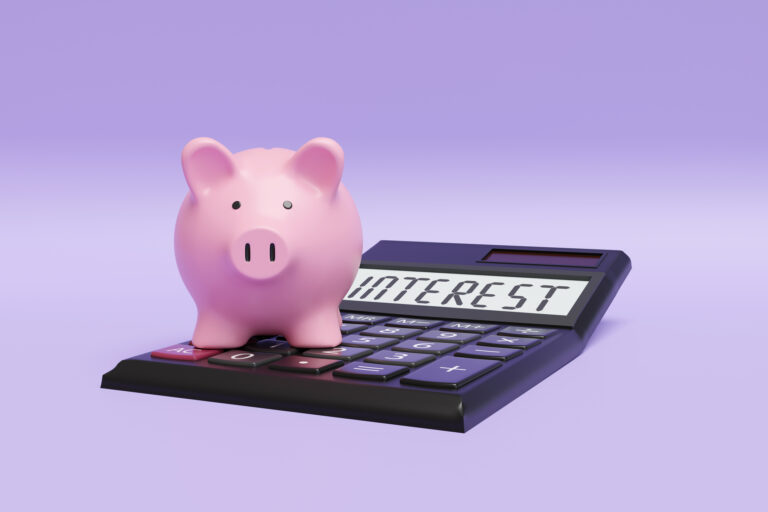On this page
What's next
Earn a high-yield savings rate with JG Wentworth Debt Relief
How Interest Is Calculated on Personal Loans
by
JG Wentworth
•
July 18, 2025
•
5 min

When you take out a personal loan, you’re not just borrowing money — you’re also paying a price for that privilege. That price comes in the form of interest. But how is interest actually calculated on a personal loan? And how does it impact the total cost of borrowing?
Understanding how personal loan interest works can help you compare offers more accurately, avoid unnecessary costs, and potentially save money over the life of the loan.
This information is provided for educational and informational purposes only. Such information or materials do not constitute and are not intended to provide legal, accounting, or tax advice and should not be relied on in that respect. We suggest that You consult an attorney, accountant, and/or financial advisor to answer any financial or legal questions.
What Is Loan Interest, Really?
Interest is the cost a lender charges for giving you access to their money. When you repay a loan, you’re not just paying back the original amount you borrowed (known as the principal). You’re also paying back a percentage of that amount as interest, which compensates the lender for the risk and time value of money.
Types of Interest Used in Personal Loans
1. Simple Interest
Most personal loans use simple interest, meaning the interest is calculated only on the principal — not on interest that accrues over time. It’s straightforward, and your monthly payments are predictable.
Formula:
Interest = Principal × Rate × Time
So if you borrow $10,000 at a 10% annual interest rate for 3 years, your interest would be:
$10,000 × 0.10 × 3 = $3,000
You’d pay $13,000 total over the life of the loan.
2. Compound Interest
Rare for personal loans, but still worth mentioning, compound interest means interest is calculated on both the principal and any previously accrued interest. This results in faster-growing debt. Compound interest is more common with credit cards and some business loans.
3. Precomputed Interest
In some cases, lenders use precomputed interest, where they calculate all the interest upfront and divide it equally across the loan term. This can work against you if you plan to pay the loan off early, since you won’t necessarily save on interest by doing so.
How Monthly Payments Are Structured
Most personal loans are amortized, meaning you pay a fixed monthly amount that covers both interest and principal. In the early months, a larger chunk of your payment goes toward interest. Over time, more of your payment is applied to the principal.
You can use an online loan calculator to see how your payments are distributed month to month.
What Affects the Interest You’ll Pay?
Several factors go into how your interest is calculated and what rate you’re offered:
Your Credit Score
Lenders use your credit score to assess your risk level. A higher score usually means a lower interest rate. If your credit is less-than-perfect, your rate may be significantly higher. Learn more about how to get approved for a personal loan with bad credit.
Loan Amount and Term Length
Larger loans and longer terms may carry higher interest costs, even if the rate stays the same. That’s because interest accrues over time.
Fixed vs. Variable Rates
Most personal loans come with fixed interest rates, meaning your rate stays the same throughout the life of the loan. However, some lenders offer variable-rate loans that can fluctuate with market conditions — potentially saving you money or costing you more, depending on timing.
Apply for a personal loan
Apply for a personal loan
APR vs. Interest Rate: Know the Difference
The interest rate is just one piece of the puzzle. The annual percentage rate (APR) gives a more complete picture because it includes not only the interest but also any fees (like origination fees).
When comparing loan offers, always look at the APR, not just the interest rate, to get a true sense of cost. For a full breakdown, check out our guide on reading the fine print on loan offers.
How to Lower Your Loan Interest
Even small differences in your interest rate can mean big savings. Here are some practical ways to lower your loan’s cost:
- Improve your credit score before applying
- Compare multiple loan offers from different lenders
- Consider a shorter loan term, which often has lower rates
- Use a co-signer with good credit to qualify for better terms
- Avoid unnecessary fees — see how personal loans can be used to consolidate debt for more efficient repayment
Example: Interest Calculation in Action
Let’s say you borrow $8,000 for 36 months at a 12% annual interest rate.
Using simple interest:
- Total interest = $8,000 × 0.12 × 3 = $2,880
- Total repayment = $10,880
- Monthly payment ≈ $302.22 (excluding fees)
Now imagine your APR includes a 1% origination fee, making the effective APR closer to 13%. Your cost goes up slightly even though the “rate” may look the same at first glance.
Bottom Line
Understanding how interest is calculated on personal loans can make you a much more informed borrower. Whether you’re taking out a loan to cover an emergency, consolidate debt, or finance a big purchase, knowing how interest works can help you avoid surprises and keep your finances in check.
About the author
Recommended reading for you
*Any information provided on this site is for educational purposes only. JGW Connects, LLC is not an agent of you or any third party advertiser on this website. You should rely on your own judgement in deciding which available product, terms and provider that best suits your personal financial requirements. We do not offer financial advice, advisory or brokerage services. We recommend that you consult with our own independent advisors regarding these products and services
JGW Connects, LLC is an independent, advertising-supported comparison site and marketing lead generator and does not play a role in decisioning for any of the third party products advertised on this webpage. JGW Connects, LLC and the JG Wentworth Company family of companies are not affiliated with the companies advertising on this webpage. You are not charged for our services. JGW Connects, LLC may receive a referral fee or other affiliate fee for connecting you with these third-party companies or upon you contracting with a third-party company. We do not make any guarantees that these are the only providers in the marketplace, or that their products or services will meet your needs. The products and services presented to you may or may not be the best, or only options, available.
JGW Connects does not provide any of the products or services advertised and does not make any decisions regarding your eligibility for those products or services. All decisions regarding approval or denial of a particular product or service are the responsibility of the participating company and will vary based upon your particular financial situation, and criteria determined by the company to whom you are matched. Not all consumers will qualify for the advertised rates and terms.






